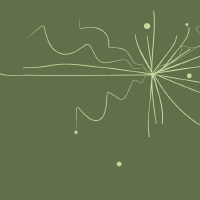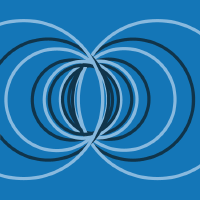Topic Menu
► Topic MenuTopic Editors



Quantum Droplets
Topic Information
Dear Colleagues,
One of the major advances in the field of ultracold atoms is the recent prediction and observation of ultradilute quantum liquids. In normal liquids, the distance between atoms is of the order of the van der Waals radius, set by the competition between the short-range repulsion and long-range attraction. Instead, ultradilute quantum liquids are formed due to a near cancellation of mean-field and beyond mean-field energy terms, which is possible due to different scaling of those terms with the density. This balance has made it possible to experimentally realize liquids at densities which are eight orders of magnitude more dilute compared to that of usual liquids, such as helium, which is a paradigmatic quantum liquid. Another important feature of the novel class of liquids is that they are almost fully coherent, while the condensate fraction in a liquid helium is smaller than ten percent. Ultradilute quantum liquids have already been created in two types of settings: (i) dipolar atoms with tunable short-range interactions and (ii) two-component mixtures with short-range interactions between atoms. Ultracold atoms offer an exquisite degree of controllability of the interactions (Feshbach resonances, confinement-induced resonances, etc.), a variety of external fields (traps, optical lattices, etc.) and various geometries (three-, two- and one-dimensional), resulting in the rapid expansion of the field. There is great interest in understanding and quantifying the properties of already available ultradilute liquids, as well as the prediction for novel species. A significant number of proposals have been elaborated for this type of quantum matter for different geometries, statistics (Bose, Fermi and mixtures) and nonlinearities, including the settings with the spin-orbit and Rabi couplings, multi-component compositions, etc. The aim of this Topic is to collect important contributions in the field of ultradilute quantum liquids, including theoretical and experimental works.
Prof. Dr. Boris Malomed
Dr. Chiara D’Errico
Prof. Dr. Enguo Chen
Dr. Grigori E. Astrakharchik
Topic Editors
Keywords
- ultradilute quantum liquids
- nonlinearities
- optical lattices
- dipolar atoms
- ultracold atoms
Participating Journals
| Journal Name | Impact Factor | CiteScore | Launched Year | First Decision (median) | APC |
|---|---|---|---|---|---|

Condensed Matter
|
1.7 | 3.7 | 2016 | 20.3 Days | CHF 1600 |

Liquids
|
- | - | 2021 | 28 Days | CHF 1000 |

Nanomaterials
|
5.3 | 7.4 | 2010 | 13.6 Days | CHF 2900 |

Particles
|
1.4 | 3.3 | 2018 | 19.6 Days | CHF 1600 |

Photonics
|
2.4 | 2.3 | 2014 | 15.5 Days | CHF 2400 |

Quantum Reports
|
- | 3.3 | 2019 | 18.7 Days | CHF 1400 |

MDPI Topics is cooperating with Preprints.org and has built a direct connection between MDPI journals and Preprints.org. Authors are encouraged to enjoy the benefits by posting a preprint at Preprints.org prior to publication:
- Immediately share your ideas ahead of publication and establish your research priority;
- Protect your idea from being stolen with this time-stamped preprint article;
- Enhance the exposure and impact of your research;
- Receive feedback from your peers in advance;
- Have it indexed in Web of Science (Preprint Citation Index), Google Scholar, Crossref, SHARE, PrePubMed, Scilit and Europe PMC.

